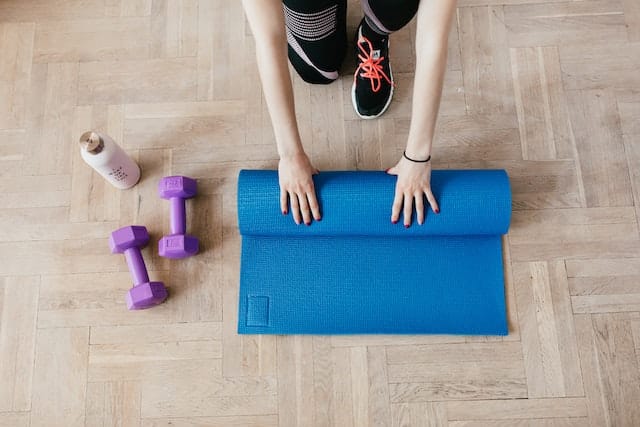
Contents
Using a new workout routine with aerobic fitness to harness physical activity in empowering ways
Muscle mass, lean muscle mass, aerobic exercise… there’s a lot to the world of fitness. And simply building fitness feels as broad as telling a builder to build a building.
So what exactly do we mean by building fitness?
Fitness encompasses both aerobic and anaerobic growth. Strength training for muscular endurance and mass growth, for example, will help with your anaerobic fitness while an exercise routine encompassing running or cycling determines your aerobic fitness level.
However, there’s a twist.
Both have an undeniable and strongly bonded connection. Strength training helps with cardio endurance, while rowing or cycling helps with building muscle too.
This is why the world of fitness is best noted as being a world, rather than the individual and separated countries that make up that world; isolating aspects of fitness can lead to detrimental growth. But, of course, closely examining how those nations help each other is of equal merit.
So let’s break down what it means to build fitness, and make a universe of growth possible at last.
Fitness level assessment
To build a tower, you must first lay its foundations. This is true for your fitness growth too. Beyond the fact that assessments can reveal a great deal of your health, with factors like digestive and kidney diseases flagging up, you should be aware of your ability first. From lifting weights to running distance, you could try the following recordings:
- Your pulse rate before and immediately after walking 1 mile (1.6 kilometers)
- How long it takes to walk 1 mile, or how long it takes to run 1.5 miles (2.41 kilometers)
- How many standard or modified pushups you can do at a time
- How far you can reach forward while seated on the floor with your legs in front of you
- Your waist circumference, just above your hipbones
- Your body mass index
Designing a fitness programme
Physical fitness is more than simply lifting something up and down or running for a few minutes; the progression you’ll desire will take a more measured approach. From bodyweight exercises to cardiovascular endurance, you’ll want to read physical activity guidelines and exercise program creation in more depth.
you could try the following tips and research more if they sound useful.
1) Consider your fitness goals
2) Create a balanced routine
3) Start low and progress slowly
4) Build activity into your daily routine
5) Plan to include different activities
6) Try high-intensity interval training
7) Allow time for recovery
8) Track your data


Conclusion
This is just the surface when it comes to fitness depth and progression. Tracking data and forming plans do take a bit of time, but the benefits you’ll feel will last far longer. The right fitness routine exists for you just put in a bit of time and grow for the rest of your life.
So get motivated to improve your fitness – this might be hard at first, especially if it’s cold and raining outside. But, you can exercise and get active anywhere – at home, work or outside. Choose a reason for becoming more active. Ask yourself why you are being active. Maybe you want to lose weight, sleep better, increase your energy, gain strength, add muscle tone and flexibility, or just feel good. Choose activities you enjoy. Variety is key, if you get bored with one activity, try a different one. Set goals and chart your fitness progress for all your exercise sessions. Over time, you’ll be able to see exactly the progress you’ve made.
FAQs
Do I need weight training?
It depends entirely on your goals and direction. Weight training is a great thing to engage in for both aerobic and anaerobic properties.